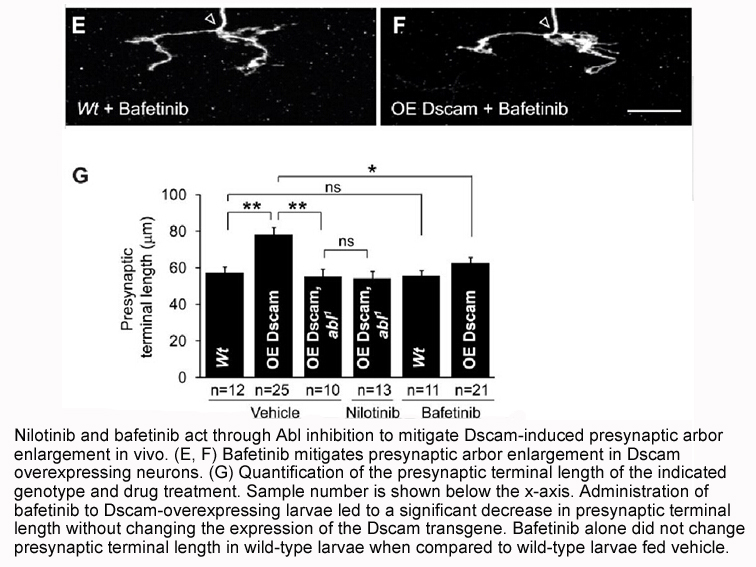Archives
One previously unreported discovery is that Ptgds
One previously unreported discovery is that Ptgds is alternatively spliced, such that partial removal of exon 3 correlates with higher levels of regeneration. The absence of exon 3 likely affects the functionality of the final product. The structure of Ptgds is that of the typical lipocalin β-barrel comprising eight antiparallel β-barrel strands, three α-helical regions, and a C-terminal β-strand. Ptgds is the only enzyme within the lipocalin family of proteins; it catalyzes the formation of PGD2 from PGH2. Like other lipocalin family members, Ptgds also functions as a transport protein for lipophilic compounds, such as retinoids, gangliosides, bilirubin, and β-amyloid peptides (). Exon 3 of Ptgds encodes Cy7 carboxylic acid (non-sulfonated) 86 through 110 of the protein sequence, forming the D and E strands (). The E strand, together with the F strand, forms the flexible E–F loop responsible for the open/closed formations of the calyx. On the basis of our sequence results, 20 amino acids are removed from exon 3, including Leu96 and Cys89. Leu96 in exon 3, with its bulky side chain, along with other nearby hydrophobic amino acids, acts to divide the central cavity into two compartments: one compartment binds and converts PGH2 to PGD2, whereas the other compartment binds lipophilic compounds, such as retinoids (). Cys89 in exon 3 forms a disulfide bridge with Cys186, which is important in stabilizing the protein structure. In all, exon 3 encodes amino acids involved in central cavity division, open/closed conformation formation, and protein stability.
We also identified a splice variant of Ptgds that completely lacks exon 2 (Supplementary Figure S3 online). Four key serine, theronine, and cysteine moieties are located within exon 2 and mutations within these residues markedly decrease Ptgds enzymatic activity (). Alternative splicing of Ptgds, such that portions of exon 2 or exon 3 are absent, may result in decreased functionality of Ptgds and contribute to the lower level of PGD2 found in the strains expressing spliced Ptgds. In support of this hypothesis, an alternative splice variant of cyclooxygenase 1 lacking 37 amino acids in exon 9 results in no detectable PGH2 product (). Conversely, splice variants of receptor and enzymes can exert dominant negative effects over their complete signaling and catalytically active forms ().
We also found that during wound healing, the capacity of tissue to generate PGE2 and PGD2 is separated over time, thus providing evidence consistent with the distinct functions of PGs. These results are similar to those observed after incisional wound healing in DBA/I mice (). In C57Bl/6J and DBA/I strains and models of wound healing, PGE2 is the more abundant product during the early phases of wound healing. Elevated levels of PGE2, a potent immune activator, are consistent with progressing inflammation (). Whereas, at later stages, when inflammation is resolving, PGE2 levels taper off and PGD2 becomes the predominant PG.
Our final previously unreported finding was that the mechanism of PGD2 inhibition of wound-induced hair neogenesis is through the Gpr44 receptor. Gpr 44 is expressed on immune cells including eosinophils, neutrophils, mast cells, basophils, a subpopulation of memory Th2 cells, and monocytes (, 1999b). It mediates the chemotaxis of these proinflammatory cells during allergic inflammation (). Our results show that in the absence of Gpr44, WIHN is increased in our experimental wound model, which suggests that follicle regeneration is possible in the absence of this proinflammatory milieu of cells. Similarly, WIHN is suppressed in wild-type mice in the presence of PGD2, arguing that the presence of proinflammatory mediators inhibits regeneration.
Although these data suggest that Gpr44 normally inhibits WIHN through recruitment of inflammatory cells, alternative interpretations are possible. Gpr44-null mice show features of both enhanced and decreased airway inflammation (; ). Conflicting data in the literature demonstrate that PGD2 both enhances and reduces allergic responses, with the Gpr44 receptor having a critical role (; ; ; ; ; ; ; ). Therefore, it is also possible that the actions of PGD2 through Gpr44 may inhibit proregenerative immune factors.
44 is expressed on immune cells including eosinophils, neutrophils, mast cells, basophils, a subpopulation of memory Th2 cells, and monocytes (, 1999b). It mediates the chemotaxis of these proinflammatory cells during allergic inflammation (). Our results show that in the absence of Gpr44, WIHN is increased in our experimental wound model, which suggests that follicle regeneration is possible in the absence of this proinflammatory milieu of cells. Similarly, WIHN is suppressed in wild-type mice in the presence of PGD2, arguing that the presence of proinflammatory mediators inhibits regeneration.
Although these data suggest that Gpr44 normally inhibits WIHN through recruitment of inflammatory cells, alternative interpretations are possible. Gpr44-null mice show features of both enhanced and decreased airway inflammation (; ). Conflicting data in the literature demonstrate that PGD2 both enhances and reduces allergic responses, with the Gpr44 receptor having a critical role (; ; ; ; ; ; ; ). Therefore, it is also possible that the actions of PGD2 through Gpr44 may inhibit proregenerative immune factors.